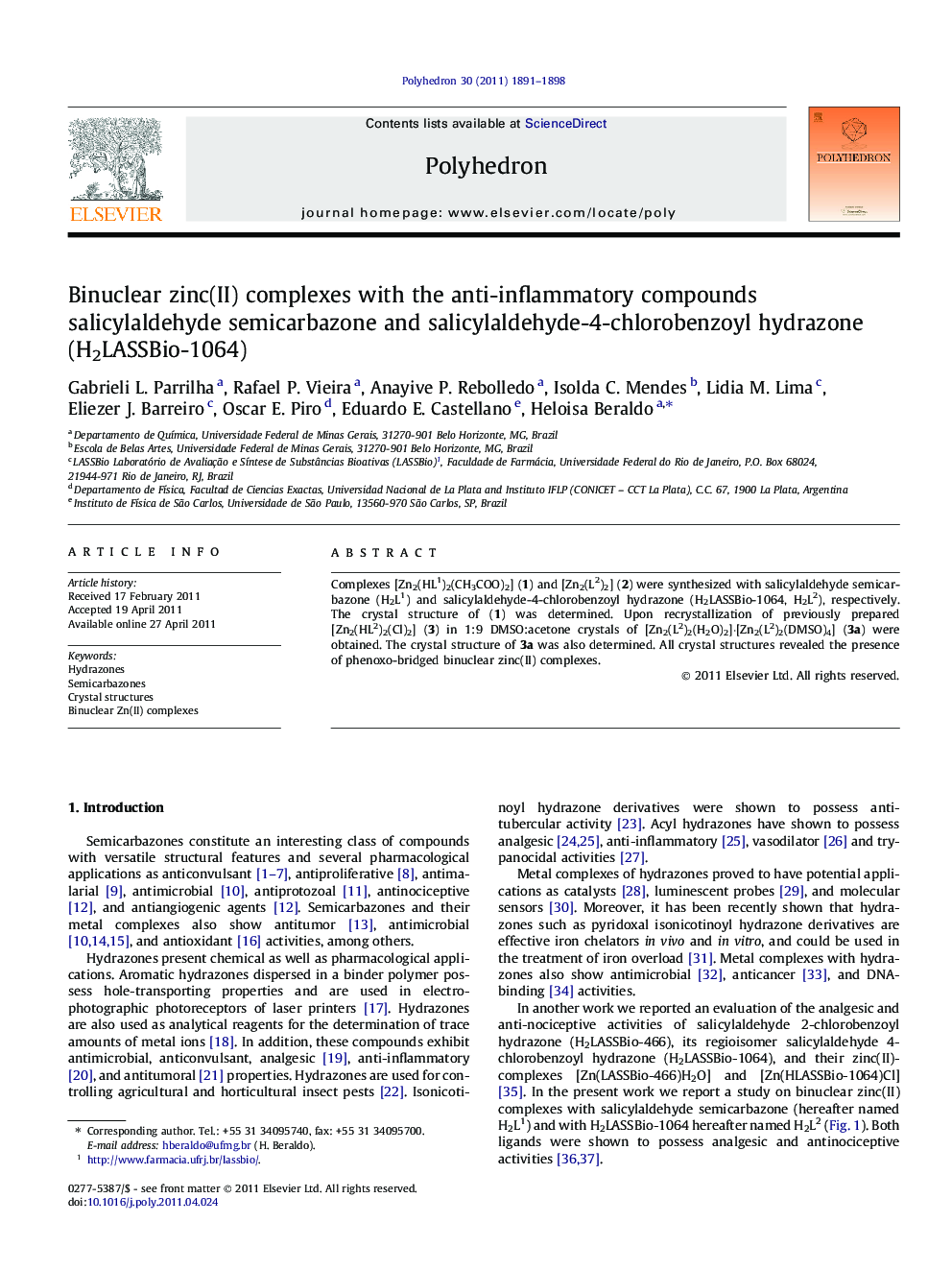| Article ID | Journal | Published Year | Pages | File Type |
|---|---|---|---|---|
| 1336089 | Polyhedron | 2011 | 8 Pages |
Complexes [Zn2(HL1)2(CH3COO)2] (1) and [Zn2(L2)2] (2) were synthesized with salicylaldehyde semicarbazone (H2L1) and salicylaldehyde-4-chlorobenzoyl hydrazone (H2LASSBio-1064, H2L2), respectively. The crystal structure of (1) was determined. Upon recrystallization of previously prepared [Zn2(HL2)2(Cl)2] (3) in 1:9 DMSO:acetone crystals of [Zn2(L2)2(H2O)2]·[Zn2(L2)2(DMSO)4] (3a) were obtained. The crystal structure of 3a was also determined. All crystal structures revealed the presence of phenoxo-bridged binuclear zinc(II) complexes.
Graphical abstract[Zn2(HL1)2(CH3COO)2] (1) and [Zn2(L2)2] (2) were obtained with salicylaldehyde semicarbazone (H2L1) and salicylaldehyde 4-chlorobenzoyl hydrazone (H2L2). Crystal structures of (1) and [Zn2(L2)2(H2O)2]·[Zn2(L2)2(DMSO)4] (3a), obtained by recrystallization of [Zn2(HL2)2(Cl)2] (3), were determined.Figure optionsDownload full-size imageDownload as PowerPoint slideHighlights► [Zn2(HL1)2(CH3COO)2] was obtained with salicylaldehyde semicarbazone (H2L1). ► Zn2(L2)2 was obtained with salicylaldehyde 4-chlorobenzoyl hydrazone (H2L2). ► The crystal structure of [Zn2(L2)2(H2O)2]·[Zn2(L2)2(DMSO)4] was determined. ► Complexes are phenoxo-bridged core dimers. ► Coordination of DMSO or water to the zinc center results in release of a co-ligand.
